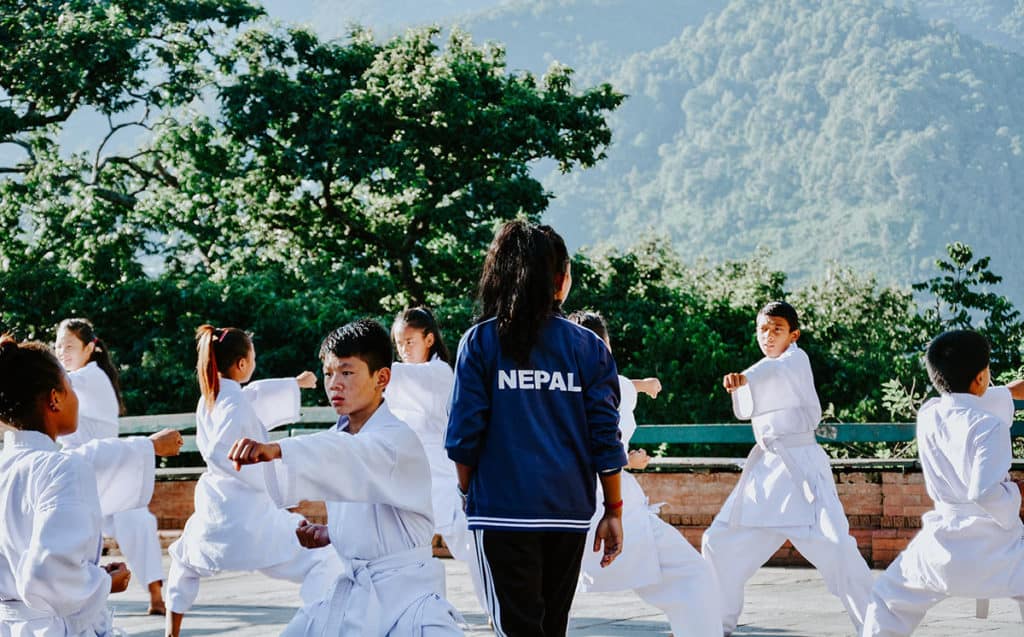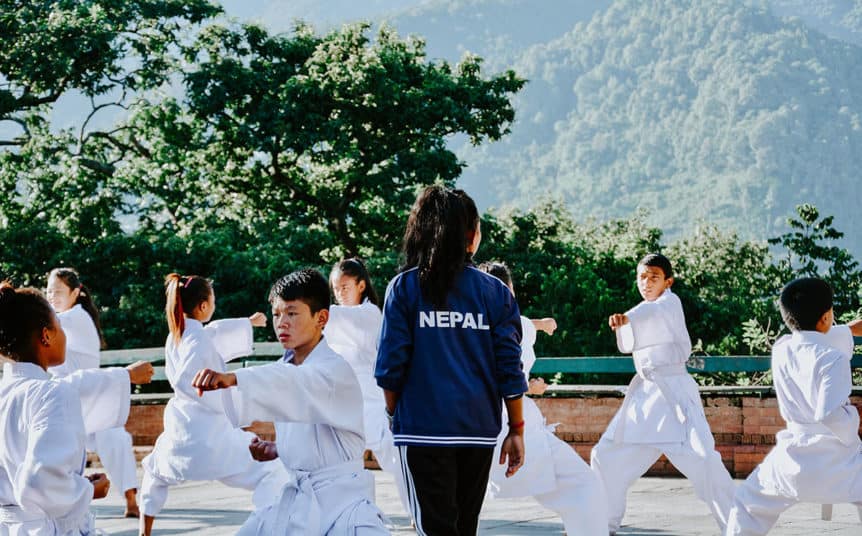
When I first stepped into a Taekwondo dojang, I thought stances were just a formality—stand this way, move that way, no big deal. But I quickly learned the hard way that a shaky stance meant wobbly kicks and weak blocks. Stances are the foundation of every move in Taekwondo, setting you up for powerful attacks, solid defenses, and better balance.
Whether you’re a beginner or a seasoned student, mastering stances is the key to leveling up. Here’s a complete guide to Taekwondo stances, from their principles to the top 10 you need to know.
What Are Taekwondo Stances?
Stances in Taekwondo are like the roots of a tree—everything you do grows from them. They’re the starting point for every kick, punch, and block, giving you stability and power. A good stance keeps you balanced, lets you move fast, and makes your techniques hit harder. Without one, you’re like a house built on sand, ready to topple. In my early days, I’d rush through stances and end up off-balance, wondering why my kicks lacked snap. Getting them right changed everything.
Principles of a Good Stance
A solid stance isn’t just about where your feet go—it’s about your whole body working together. Here’s what makes a stance effective:
- Balance: Stay centered so you don’t tip over during a kick or block. Even weight distribution (unless the stance calls for otherwise) keeps you steady.
- Relaxed Body: Stay loose, not stiff. Tension slows you down, while a relaxed body moves fluidly and reacts faster.
- Straight Back: Keep your spine aligned to maintain a strong base. A hunched back throws off your balance and weakens your moves.
- Tight Core: Engage your abs to control your movements and stay stable, especially during dynamic techniques.
- Foot Placement: Stand on the balls of your feet for quick reactions. Proper foot positioning ensures even weight and fast transitions.
- Breathing: Breathe steadily to stay calm and maintain stamina. Holding your breath makes stances harder to hold.
Top 10 Taekwondo Stances
Taekwondo has dozens of stances, but these 10 are the core ones you’ll see across World Taekwondo (WT), International Taekwon-Do Federation (ITF), and American Taekwondo Association (ATA) schools. Each has a specific purpose, from building strength to setting up attacks.
1. Attention Stance (Charyot Sogi)
Stand tall at the start or end of class, feet together, hands at your sides, eyes forward. It’s about focus, waiting for the instructor’s command. Think of it as hitting the reset button before moving.
2. Ready Stance (Joonbi Sogi)
When the instructor calls “Joonbi,” you step left, feet shoulder-width apart, fists below your belt, elbows bent. Knees are slightly bent, and you’re on the balls of your feet, ready to spring into action.
3. Walking Stance (Ap Sogi / Gunnun Sogi)
Step forward with your left foot, feet shoulder-width apart, back foot angled up to 30 degrees. Weight is even, making it great for offensive moves like punches or front kicks.
4. Back Stance (Dwitgubi Sogi)
Form an L-shape with your feet: front foot forward, back foot at 90 degrees. Put 70% of your weight on the back leg, chest sideways. It’s a defensive stance for dodging strikes and retreating.
5. Horse Stance (Juchum Sogi)
Squat wide, about four steps across, with feet, knees, and shoulders facing forward. Fists sit at your belt. It builds leg strength and supports powerful punches or side kicks.
6. Cross Stance (Kkoa Sogi)
Used in forms like WT’s Taegeuk Oh Jang, this transitional stance happens when your feet cross while turning. Front-cross is Kkoa Sogi; rear-cross is Dwi Kkoa Sogi. It’s about smooth pivots.
7. Front Stance (Apkubi Sogi)
Take a big step forward, feet 1.5–2 shoulders apart. Front leg lunges, back leg straight, back foot at 45 degrees. Most weight is on the front leg, ideal for long-range kicks.
8. Tiger/Cat Stance (Beom Sogi)
A compact stance with feet close, knees bent, front heel off the ground, and most weight on the back foot. It’s defensive, letting you move easily and protect your groin with the front foot.
9. Fighting Stance (Kyorugi Sogi)
Used in sparring, feet are shoulder-width apart, front foot slightly forward, hands up, chin down. Weight leans forward slightly. Open or closed stance depends on your opponent’s side.
10. Crane Stance (Hakdari Sogi)
Balance on one leg, front knee bent and raised, back foot angled. It’s for balance training and setting up jumping kicks, not just a Karate Kid pose.
Stances Across WT, ITF, and ATA
Each Taekwondo organization has its own stance list, though there’s overlap. Here’s a comparison:
| Stance | World Taekwondo (WT) | International Taekwon-Do Federation (ITF) | American Taekwondo Association (ATA) |
|---|---|---|---|
| Attention Stance | Charyot Seogi | Charyot Sogi | Charyot Sogi |
| Ready Stance | Joonbi Seogi | Joonbi Sogi | Joonbi Sogi |
| Walking Stance | Ap Seogi | Gunnun Sogi | Ap Sogi |
| Back Stance | Dwitgubi Seogi | Dwitgubi Sogi | Dwitgubi Sogi |
| Horse Stance | Juchum Seogi | Juchum Sogi | Juchum Sogi |
| Front Stance | Apkubi Seogi | Apkubi Sogi | Apkubi Sogi |
| Tiger/Cat Stance | Beom Seogi | Beom Sogi | Beom Sogi |
| Fighting Stance | Kyorugi Seogi | Kyorugi Sogi | Kyorugi Sogi |
| Crane Stance | Hakdari Seogi | Hakdari Sogi | Hakdari Sogi |
| Closed Stance | Moa Seogi | Moa Sogi | Moa Sogi |
| Bending Stance | — | Guburyo Sogi | — |
| Fixed Stance | — | Gojung Sogi | — |
- WT: Focuses on stances for forms (poomsae) and sparring, like Moa Seogi (closed) and Yeop Seogi (side).
- ITF: Emphasizes stances for patterns (tul), adding unique ones like Guburyo Sogi (bending) and Gojung Sogi (fixed).
- ATA: Blends WT and ITF stances, tailoring them for forms and practical self-defense, often using simpler names.
How Stances Fit Into Practice

Stances aren’t just static poses—they flow together in forms, sparring, and self-defense. In poomsae or tul, you shift from Walking Stance to Front Stance to execute blocks or strikes. In sparring, you rely on Fighting Stance to stay mobile, switching to Back Stance for defense. For self-defense, Tiger Stance helps you dodge and counter. Practice transitions (e.g., Joonbi Sogi to Apkubi Sogi) to make movements smooth and instinctive.
Tips to Master Stances
- Check Your Form: Use a mirror to ensure your back is straight, core tight, and feet positioned correctly.
- Drill Transitions: Practice moving between stances (e.g., Walking to Back) to build fluidity.
- Build Strength: Hold Horse Stance for 30–60 seconds to strengthen legs and core.
- Breathe: Exhale during transitions to stay relaxed and maintain stamina.
- Get Feedback: Ask your instructor to correct your posture—small tweaks make a big difference.
Final Thoughts
Stances are the backbone of Taekwondo, giving you the stability and power to execute every technique. They take time to master, but the effort pays off in stronger kicks, sharper blocks, and better balance. Keep practicing, stay patient, and focus on the basics. With solid stances, you’ll feel more confident in the dojang and beyond.

